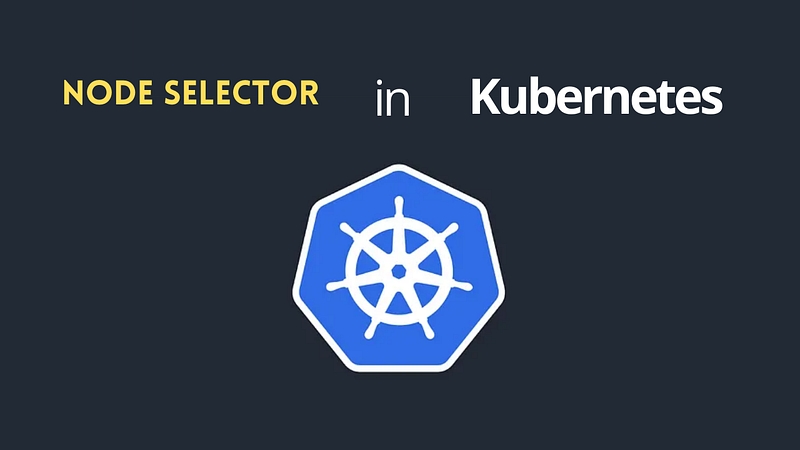Understanding Kubernetes: Part 23 Node Selector

📢 If you’ve been following our Kubernetes series 2025, welcome back! For new readers, check out Part 22: Resource Requests & Limits
What is Node Selector in Kubernetes?
In Kubernetes, a Node Selector is a simple way to constrain a pod to run on a specific set of nodes. It ensures that your workloads are scheduled on the appropriate nodes based on labels assigned to them.
Labels: Key-value pairs assigned to nodes that categorize them based on attributes like hardware type, region, or purpose.
nodeSelector: A field in the pod specification that matches node labels to schedule pods on specific nodes.
Why Use Node Selector?
✅ Hardware Optimization: Schedule workloads on nodes with specific CPU, memory, or GPU capabilities. ✅ Cost Efficiency: Run cost-sensitive workloads on cheaper node pools. ✅ High Availability: Ensure critical workloads run on dedicated nodes for reliability. ✅ Compliance & Security: Deploy sensitive applications on isolated nodes for security.
Example YAML for Node Selector
apiVersion: v1
kind: Pod
metadata:
name: node-selector-demo
spec:
nodeSelector:
disktype: ssd
containers:
- name: my-app
image: my-app:latestExplanation:
nodeSelector: Ensures that the pod runs only on nodes labeled withdisktype=ssd.Node Labels: Nodes must have the appropriate label, which can be set using:
kubectl label nodes <node-name> disktype=ssd
This method provides a basic way to control pod placement but lacks flexibility for complex scheduling needs.
In My Previous Role
As a Senior DevOps Engineer, I used Node Selectors to optimize workload placement:
Ensuring High Performance: Scheduled machine learning workloads on GPU-enabled nodes.
Cost Savings: Deployed batch jobs on spot instances using labeled node pools.
Cluster Stability: Segregated frontend and backend services onto different node groups.
🚀 Ready to Master Kubernetes?
Take your Kubernetes journey to the next level with the Master Kubernetes: Zero to Hero course! 🌟 Whether you’re a beginner or aiming to sharpen your skills, this hands-on course covers:
✅ Kubernetes Basics — Grasp essential concepts like nodes, pods, and services. ✅ Advanced Scaling — Learn HPA, VPA, and resource optimization. ✅ Monitoring Tools — Master Prometheus, Grafana, and AlertManager. ✅ Real-World Scenarios — Build production-ready Kubernetes setups.
🎓 What You’ll Achieve
💡 Confidently deploy and manage Kubernetes clusters. 🛡️ Secure applications with ConfigMaps and Secrets. 📈 Optimize and monitor resources for peak performance.
🔥 Start Learning Now: [Join the Master Kubernetes Course](https://cloudops0.gumroad.com/l/k8s)
Don’t miss your chance to become a Kubernetes expert! 💻✨
🚀 Stay ahead in DevOps and SRE! 🔔 Subscribe now and never miss a beat on Kubernetes and more. 🌟
Last updated